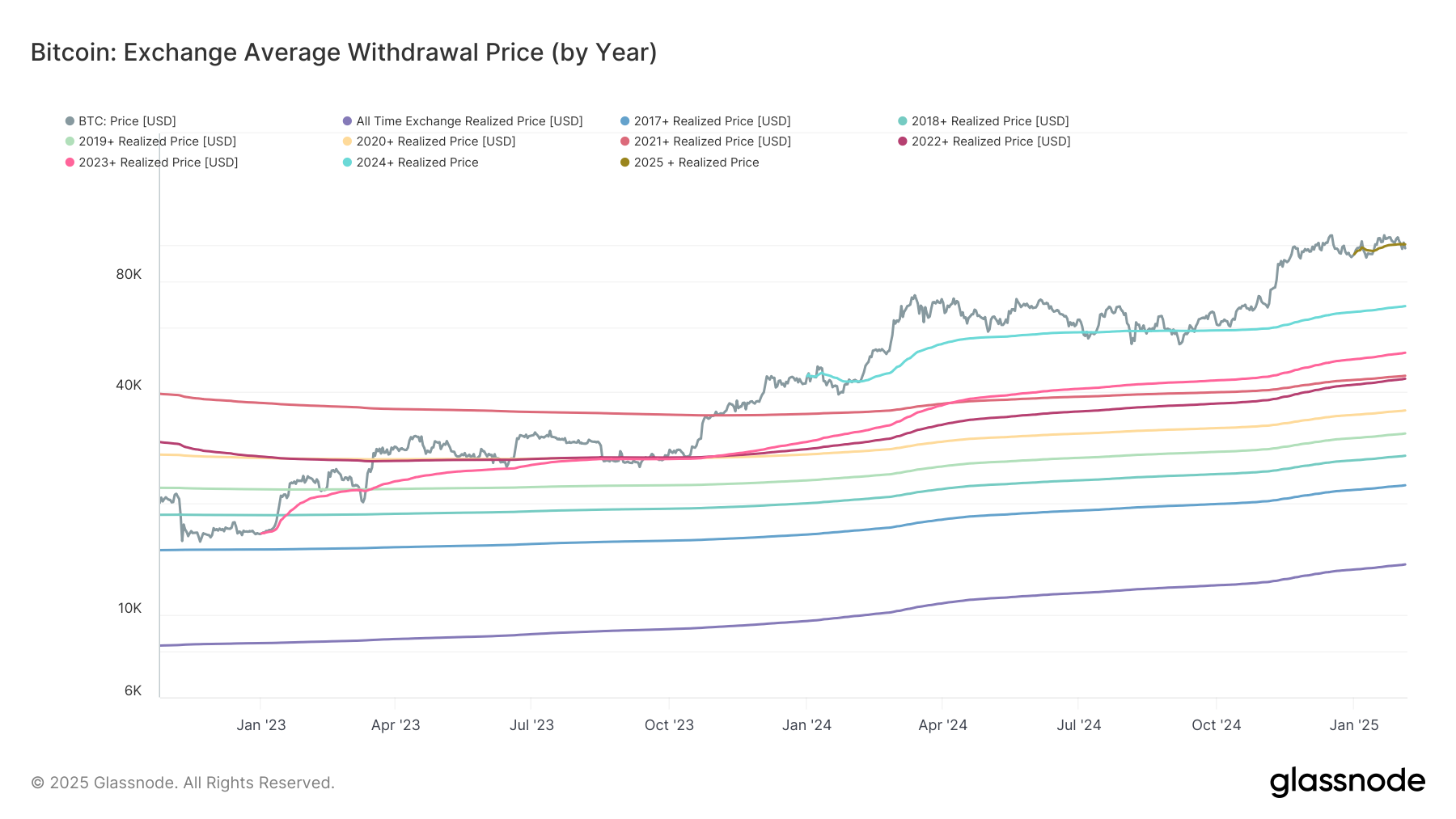Uncategorized
Bitcoin Drops Below Key 2025 Realized Price Level, Raising Risk of Further Downside: Van Straten

The average withdrawal price of bitcoin (BTC) from exchanges in 2025 currently stands at $100,356. At present, bitcoin is trading just below this level, hovering around $98,000.
The concern arises when bitcoin falls below the average withdrawal price for a sustained period of time, as this can often trigger continued selling and more downward price pressure. Historically, this metric has served as a strong support level for bitcoin.
Busting below this support, however, does not necessarily indicate a bear market or sustained declines, as bitcoin historically reclaims this price level quickly.
In 2024, for example, bitcoin repeatedly tested its average withdrawal price just below $60,000. The price indeed did briefly dip below this level multiple times, most notably in August during the yen carry trade unwind when it fell to $49,000. The price, though, managed to reclaim the support level within a few days.
Similarly, in 2023, the realized price provided key support on multiple occasions, including during the Silicon Valley Bank collapse in March ($20,000) and again in September, just before bitcoin’s Q4 rally.
According to Glassnode data, over 2.6 million BTC are sitting at a loss, one of the highest amounts this year. The longer it sustains a price below the 2025 average, the greater the chance further declines could be in order.
Uncategorized
Elon Musk vs. the regulators
Welcome back to TechCrunch Mobility, your hub for all things “future of transportation.”
Uncategorized
Nvidia’s AI empire: A look at its top startup investments
Over the last two years, Nvidia has used its ballooning fortunes to invest in over 100 AI startups. Here are the giant semiconductor’s largest investments.
Uncategorized
Dating app Cerca will show how Gen Z really dates at TechCrunch Disrupt 2025
Cerca is a dating app that sets users up with mutual friends.
-

 Business12 месяцев ago
Business12 месяцев ago3 Ways to make your business presentation more relatable
-

 Fashion12 месяцев ago
Fashion12 месяцев agoAccording to Dior Couture, this taboo fashion accessory is back
-

 Entertainment12 месяцев ago
Entertainment12 месяцев ago10 Artists who retired from music and made a comeback
-

 Entertainment12 месяцев ago
Entertainment12 месяцев ago\’Better Call Saul\’ has been renewed for a fourth season
-

 Entertainment12 месяцев ago
Entertainment12 месяцев agoNew Season 8 Walking Dead trailer flashes forward in time
-

 Business12 месяцев ago
Business12 месяцев ago15 Habits that could be hurting your business relationships
-

 Entertainment12 месяцев ago
Entertainment12 месяцев agoMeet Superman\’s grandfather in new trailer for Krypton
-

 Uncategorized4 месяца ago
Uncategorized4 месяца agoRobinhood Launches Micro Bitcoin, Solana and XRP Futures Contracts


